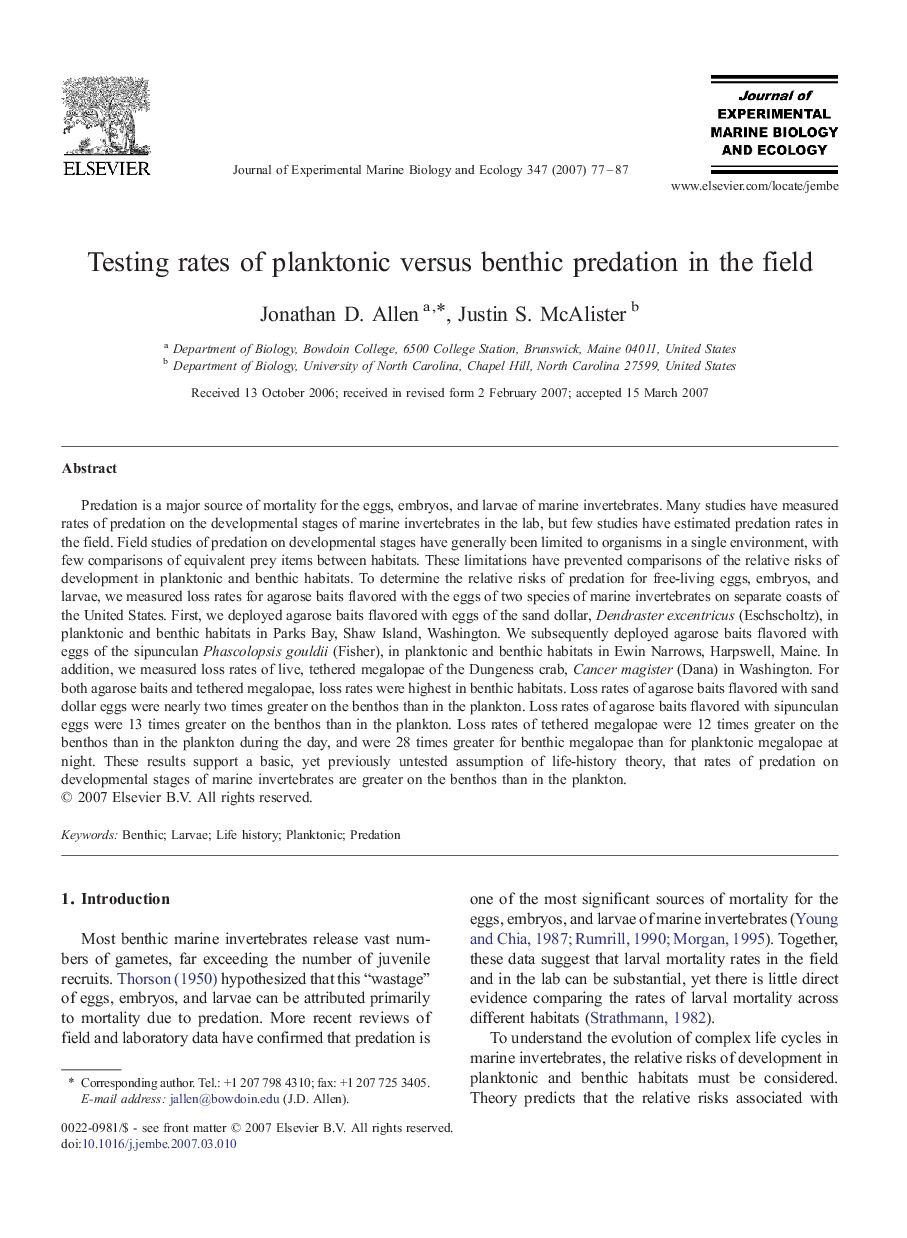| کد مقاله | کد نشریه | سال انتشار | مقاله انگلیسی | نسخه تمام متن |
|---|---|---|---|---|
| 4397612 | 1618490 | 2007 | 11 صفحه PDF | دانلود رایگان |
عنوان انگلیسی مقاله ISI
Testing rates of planktonic versus benthic predation in the field
دانلود مقاله + سفارش ترجمه
دانلود مقاله ISI انگلیسی
رایگان برای ایرانیان
کلمات کلیدی
موضوعات مرتبط
علوم زیستی و بیوفناوری
علوم کشاورزی و بیولوژیک
علوم آبزیان
پیش نمایش صفحه اول مقاله

چکیده انگلیسی
Predation is a major source of mortality for the eggs, embryos, and larvae of marine invertebrates. Many studies have measured rates of predation on the developmental stages of marine invertebrates in the lab, but few studies have estimated predation rates in the field. Field studies of predation on developmental stages have generally been limited to organisms in a single environment, with few comparisons of equivalent prey items between habitats. These limitations have prevented comparisons of the relative risks of development in planktonic and benthic habitats. To determine the relative risks of predation for free-living eggs, embryos, and larvae, we measured loss rates for agarose baits flavored with the eggs of two species of marine invertebrates on separate coasts of the United States. First, we deployed agarose baits flavored with eggs of the sand dollar, Dendraster excentricus (Eschscholtz), in planktonic and benthic habitats in Parks Bay, Shaw Island, Washington. We subsequently deployed agarose baits flavored with eggs of the sipunculan Phascolopsis gouldii (Fisher), in planktonic and benthic habitats in Ewin Narrows, Harpswell, Maine. In addition, we measured loss rates of live, tethered megalopae of the Dungeness crab, Cancer magister (Dana) in Washington. For both agarose baits and tethered megalopae, loss rates were highest in benthic habitats. Loss rates of agarose baits flavored with sand dollar eggs were nearly two times greater on the benthos than in the plankton. Loss rates of agarose baits flavored with sipunculan eggs were 13 times greater on the benthos than in the plankton. Loss rates of tethered megalopae were 12 times greater on the benthos than in the plankton during the day, and were 28 times greater for benthic megalopae than for planktonic megalopae at night. These results support a basic, yet previously untested assumption of life-history theory, that rates of predation on developmental stages of marine invertebrates are greater on the benthos than in the plankton.
ناشر
Database: Elsevier - ScienceDirect (ساینس دایرکت)
Journal: Journal of Experimental Marine Biology and Ecology - Volume 347, Issues 1â2, 24 August 2007, Pages 77-87
Journal: Journal of Experimental Marine Biology and Ecology - Volume 347, Issues 1â2, 24 August 2007, Pages 77-87
نویسندگان
Jonathan D. Allen, Justin S. McAlister,